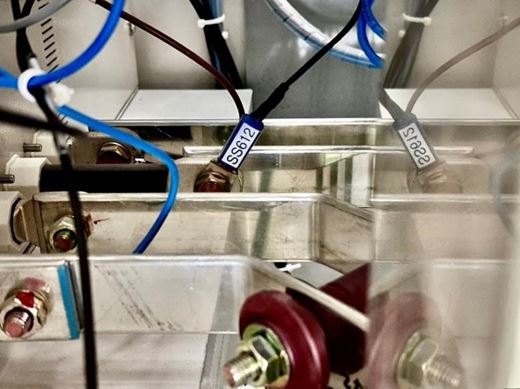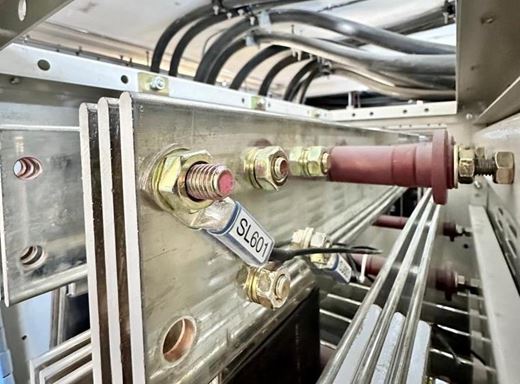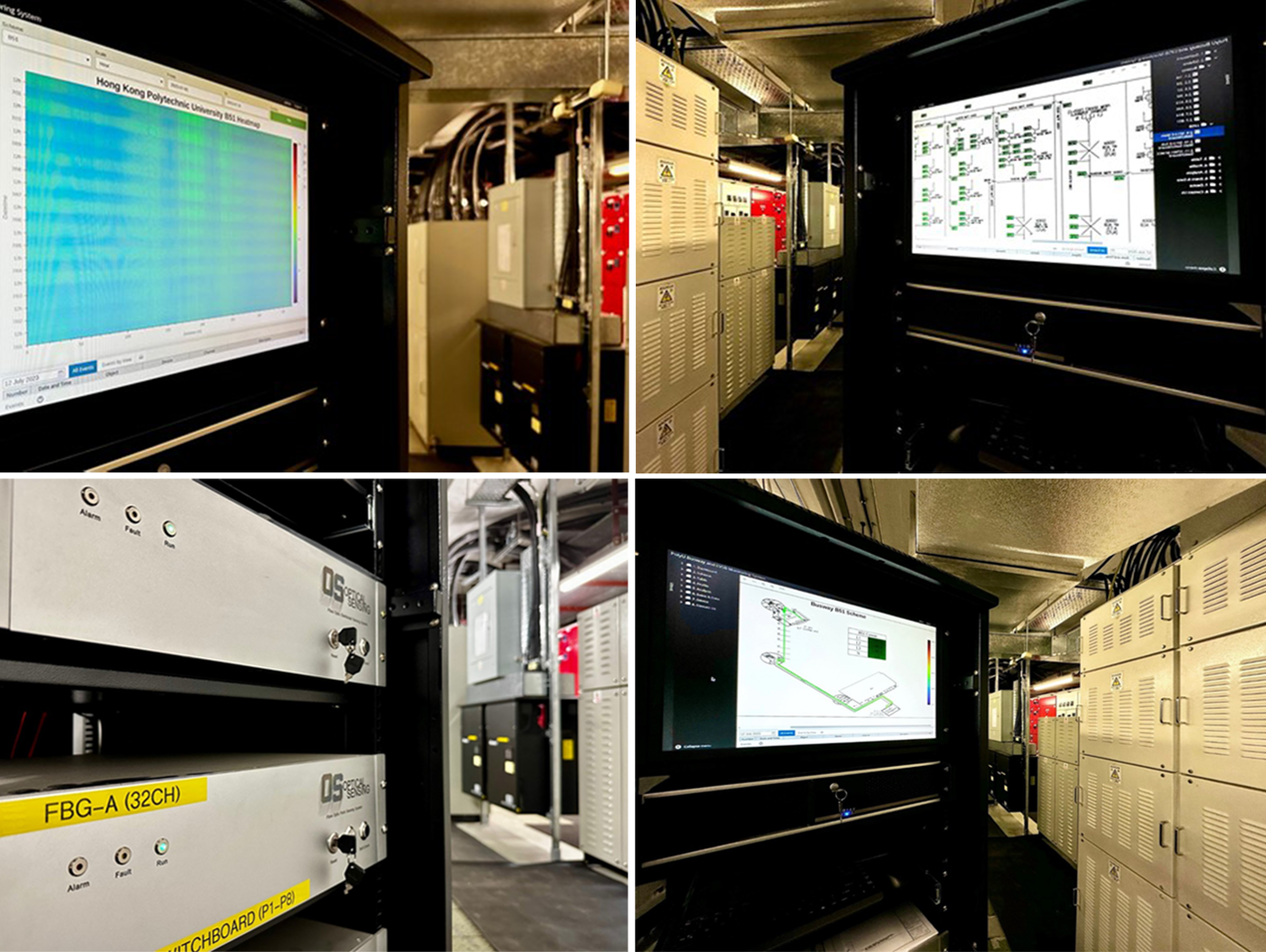PolyU's "Smart" Power Supply System with Round-the-clock Monitoring to Ensure Stability

Professor Joseph Lai (left) and CFSO (Mr. Kent Yau, Associate Director of CFSO, right) are collecting data to explore the potential for wider adoption of the smart monitoring system across the campus buildings.
Universities can shape the future of a city. It is not only responsible for nurturing talents and developing new technologies, but also provides room for large-scale experiments on new concepts, paving the way for their wider use in the future.
In this regard, the team led by Professor Joseph Lai from the Department of Building Environment and Energy Engineering of The Hong Kong Polytechnic University (PolyU), in collaboration with PolyU's Campus Facilities and Sustainability Office (CFSO), has introduced a fibre-optic temperature sensing system for Communal Building’s power supply system as part of a pilot project. Through this 24/7 smart monitoring system, it is hoped to enhance the stability of the campus power supply.
The system has been in operation for some time on a trial basis. Professor Lai's team and the CFSO will analyze the data collected during this period to decide whether to introduce this system to other campus buildings. This would be a step forward in achieving PolyU vision of a Smart Campus.
Monitor Power Supply 24/7 to Avert Disasters


Fibre optic sensors installed in low-voltage switchboards to enable real-time monitoring of cable temperature changes.
A safe and stable power supply system is extremely important for major buildings. Unstable power supply may cause security system failures which will lead to business losses. In a university setting, power outages can result in malfunctioning of laboratory equipment and even affect learning and research progress.
The traditional power supply system consists of a large number of cables, which transmit electricity to different buildings through the transformer system and low-voltage switchboards. However, slight loosening of cable connections can cause the temperature of the joint to rise abnormally, which may cause the cable to deteriorate, thereby affecting its conductivity and even resulting in a short circuit or unstable power supply. As power supply facilities age, the associated risks will also increase.
In the past, registered electrical technicians used infrared temperature sensors to detect cable joints with abnormal temperature rise during maintenance inspections. In order to improve the accuracy of detection, electrical technicians often conducted the detection without suspension of the power supply system. Therefore, a series of strict control measures would need to be implemented to reduce the risk of electric shock and ensure personal safety. In addition, electrical technicians needed to inspect part by part along the cable and sometimes relied on their personal experience to judge whether further detailed inspection or replacement of parts was required. In fact, individual judgment could be inaccurate, and it might limit the scope of inspection. In addition to human risks, this inspection practice also involved a lot of manpower and resources that it can only be carried out regularly or as needed at most. Overall, it had considerable limitations.
However, PolyU’s smart monitoring system with fibre optic sensors installed can monitor the changes in temperature parameters of the busbars in the low-voltage switchboard and the rising mains of the campus building's power supply in real-time 24/7 without frequent manual inspections. If abnormal temperature changes are detected, they will be displayed on the console and the system will generate alerts to the relevant personnel in order for them to take appropriate follow-up action. The system can also analyze parameters to assist in identifying potential issues, such as predicting changes in power supply requirements during abnormal weather conditions or around semester times. It anticipates when maintenance is needed, and notifies the relevant departments by emails or text messages to arrange maintenance, hence proactively addressing potential issues before they occur to ensure a stable power supply.

The fibre optic sensor can monitor the temperature parameter changes of the busbar in the low-voltage switchboard in real-time and report the status to relevant departments for follow-up through cloud technology.
Reduce the Need for Labour-intensive Work — in Line with the Trends
While the main cost of the smart monitoring system is the initial installation, the cost is well worth the benefits as the system allows technicians to concentrate on tasks with higher priority in the long run.
In addition, the system console is relatively easy to operate and can be handled by frontline staff, hence freeing up engineers’ time to deal with other more important matters. This in turn allows PolyU more flexibility for recruitment in the future.
Professor Lai said, "Hong Kong has been facing manpower shortages in recent years, especially frontline technical staff. Different sectors are looking for ways to attract talents, streamline processes or use technology in place of conventional manual operations. I believe that the smart monitoring system will gain much wider adoption in the future."
Currently, the CFSO is considering extending the system to other campus buildings. However, the team still needs more data for analysis.
Professor Lai said, "In addition to cost-effectiveness, it is paramount that we deliver a reliable and safe power supply system.”

With fibre optic sensors installed, the system can monitor temperature changes along the cable 24/7 in real-time and send alerts when necessary.
